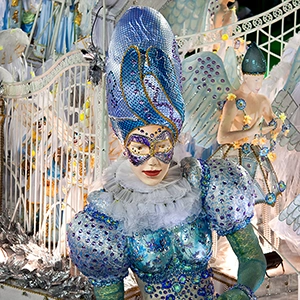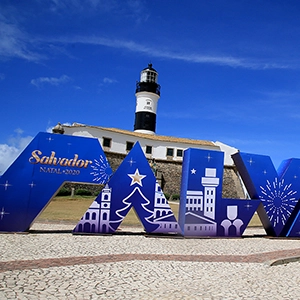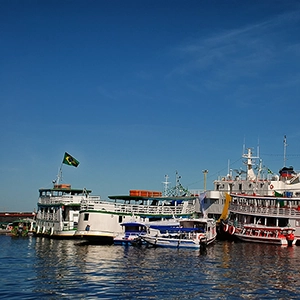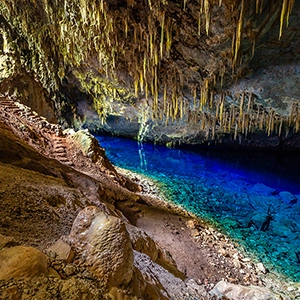Visit The Historic Town Of Ouro Preto, Known For Its Baroque Architecture

Introduction to Ouro Preto
If you are planning a trip to Brazil, you should consider visiting the historic town of Ouro Preto. Nestled in the heart of the Minas Gerais state, Ouro Preto is a UNESCO World Heritage Site, known worldwide for its baroque architecture, vibrant cultural scene, and rich history. The city's unique and well-preserved architecture provides visitors with a glimpse into Brazil's colonial past. This article will give you a comprehensive guide to visiting Ouro Preto, exploring its history, culture, and the must-see BAROOC architectuural sites.
The History of Ouro Preto
Ouro Preto, or "Black Gold," got its name from the blackened gold ore discovered in the region in the late 17th century. As one of Brazil's most significant gold rush towns, the city played a crucial role in the country's colonial history, becoming the epicenter of the gold and diamond trade during the 18th century. At its peak, Ouro Preto was one of the most populous and wealthiest cities in the Americas. However, with the depletion of gold mines and the shifting of the capital to Belo Horizonte in the late 1800s, Ouro Preto's importance significantly waned.
Nonetheless, the city's vibrant history is well-preserved in its cobblestone streets, opulent churches, and colonial-era mansions. Ouro Preto is also famous for being the birthplace of the Inconfidência Mineira, a movement that sought to establish an independent Brazilian republic in 1789. Led by the iconic martyr, Tiradentes, the rebellion ultimately failed, but the spirit of the movement still resonates throughout the city.
Ouro Preto's Baroque Architecture
Throughout the city of Ouro Preto, visitors can experience the grand Baroque architecture of the 18th and 19th centuries - a legacy of the town's prosperous gold mining era. In contrast to the minimalistic designs found in many modern cities today, the baroque style stands out for its intricate details, dramatic curves, and elaborate ornamentation.
The two most influential architects of Ouro Preto's Baroque period were the Brazilian master sculptor Antônio Francisco Lisboa, known as Aleijadinho, and the Portuguese architect Manuel Francisco Lisboa. Together, they created some of the most stunning examples of Baroque architecture in Brazil. Some of their most famous works include the Church of São Francisco de Assis, the Church of Nossa Senhora do Carmo, and the Church of Nossa Senhora do Pilar.
Exploring Ouro Preto's Churches
As a testament to the city's religious devotion, there are numerous impressive churches in Ouro Preto that boast intricate baroque art and design. Here are a few of the must-visit churches in the city:
1. Church of São Francisco de Assis: Completed in 1771, this church is considered one of the best works of Aleijadinho and Manuel Francisco. The exterior features an ornate curved façade, while the interior showcases richly gilded woodwork and Aleijadinho's famous sculptural masterpiece - the Soapstone Pulpit.
2. Church of Nossa Senhora do Pilar: This church is home to one of the most important religious art collections in Brazil, with nearly 900 pounds of gold covering its ornate altar and wood carvings. Built in 1711, it is one of Ouro Preto's oldest churches.
3. Church of Nossa Senhora do Carmo: Designed by Manuel Francisco Lisboa, this church features a distinctive façade with large windows and sculptural details. The church houses a museum with an impressive collection of religious artifacts, including a wooden statue of Christ attributed to Aleijadinho.
Discover Ouro Preto's Museums
Ouro Preto's museums are dedicated to preserving and showcasing the city's rich history and artistic heritage. Some noteworthy museums to visit include:
1. Museu da Inconfidência: Housed in a former government palace, the museum offers an in-depth look into the Inconfidência Mineira movement, colonial life, and the city's mining history. Exhibits include personal belongings of Tiradentes, religious artifacts, and paintings depicting the mines and life in 18th-century Ouro Preto.
2. Mineralogy Museum: With a vast collection of minerals and gemstones from the region's mines, this museum allows visitors to learn about the geological richness of Minas Gerais and its impact on Brazil's economic and social development.
Wander the Historic Streets of Ouro Preto
One of the best ways to experience the charm of Ouro Preto is by simply strolling through its hilly streets. Navigate the picturesque cobblestone streets, admire the colorful colonial houses, and immerse yourself in the city's vibrant atmosphere. Be sure to visit the bustling central square, the Praça Tiradentes, surrounded by historical buildings such as the Casa dos Contos and the former governor's palace, which now serves as the Museu da Inconfidência.
Participate in Ouro Preto's Rich Cultural Scene
Beyond the architectural and historical sites of Ouro Preto, visitors can also partake in the city's thriving cultural scene. From theater and dance performances to art workshops and culinary experiences, there's plenty to keep you entertained. Additionally, Ouro Preto is renowned for its annual Semana Santa (Holy Week) and Carnival celebrations, which attract tourists from all over the world.
Conclusion
Ouro Preto is a hidden gem in Brazil, offering visitors a unique opportunity to travel back in time and immerse themselves in a rich cultural heritage. From its stunning baroque architecture and opulent churches to its fascinating history and vibrant cultural scene, the charms of Ouro Preto are sure to leave a lasting impression on all who visit.









